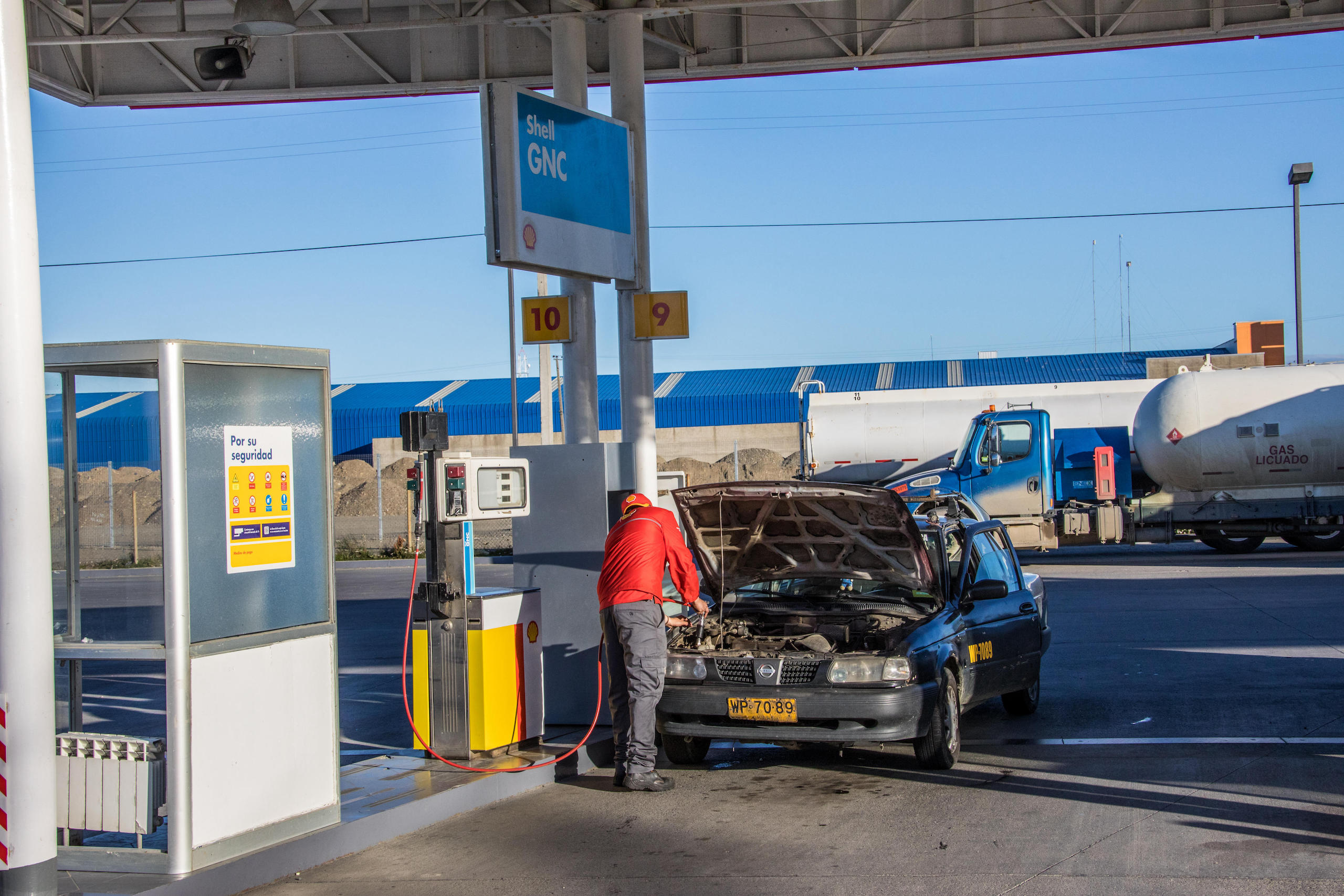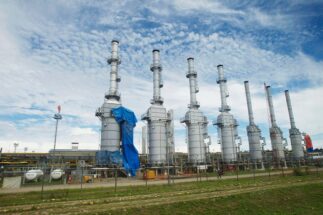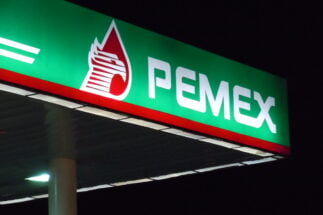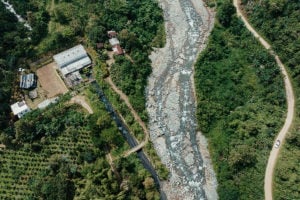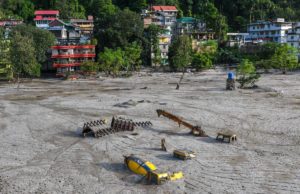Despite ever-growing awareness that greenhouse gas emissions are causing climate change, emissions still hit an all-time high in 2022. Carbon dioxide emissions have historically received the most attention, but to limit medium-term global warming, a rapid and sustained reduction in methane pollution will also be key. However, establishing a reliable, global overview of the fossil fuel industry’s methane emissions is an ongoing problem.
The International Energy Agency (IEA) estimates that methane emissions are responsible for around 30% of the steady rise in global average temperatures since the industrial revolution. Atmospheric methane is more powerful in trapping heat than carbon dioxide – at least 80 times more potent across 20 years – but it dissipates much more quickly. Given the urgency of the climate crisis and the near-term greenhouse gas reduction targets of the Paris Agreement, methane emissions are a pressing concern.
Methane leaks – the escape of the gas from fossil fuel pipelines, drilling and production sites – is also a significant problem. “Very small methane leakage rates from gas systems rival coal’s greenhouse gas emissions,” says Deborah Gordon, a senior principal of the Rocky Mountain Institute’s Climate Intelligence program, who was part of a team behind a 2023 study on methane leakages in gas and coal systems. Their research found that even a mere 0.2% methane leakage rate from a gas system can give it the same life-cycle emissions, and net climate impact over 20 years, as mined coal.
Methane is typically a wasted by-product in sectors including agriculture, but a valuable commodity elsewhere: the gas industry prizes methane, which constitutes up to 90% of what it sells as “natural gas”. The fossil fuel industry is responsible for about 35% of all human-caused methane emissions.
Last year, Shell was the world’s seventh-largest oil producer by volume and fifth-largest oil company by revenue. Its operations spread across 70 countries and include the exploration, production and marketing of gas.
Shell reported a decrease in total methane emissions from its operations by 27% in 2022, down to 40,000 tonnes, compared with 55,000 tonnes in 2021. The company also claims to have met its target of keeping the intensity of its methane emissions below 0.2%.
Methane intensity figures are designed to track the methane pollution levels of oil and gas producers. The figure is calculated by monitoring the methane emitted by any gas that is sold, then expressing those emissions as a percentage of the company’s total sold. This relatively new metric was standardised by a coalition of major oil and gas companies (including Shell) called the Oil and Gas Climate Initiative (OGCI). In 2018, the OGCI announced that its member companies all aimed to reduce their methane intensity to 0.25% by 2025.
However, the way fossil fuel giants like Shell calculate their methane emissions is being questioned. According to Dominic Watson, a methane expert at the Environmental Defense Fund (EDF), “methane emissions from oil and gas are consistently underestimated.”
Watson says there is virtually no direct measurement happening at oil and gas extraction sites or infrastructure. Instead, oil and gas producers rely on “factors-based” calculations, made using off-the-shelf accounting software. Furthermore, Watson says these companies have generally been self-reporting their methane emissions and independently setting pollution targets for decades.
‘Almost everywhere we go, we find methane’
Methane has the potential to escape across the oil and gas value chain – emissions which are also said to have been significantly underreported, even in jurisdictions where regulators are supposedly paying attention.
A 2018 study of US oil and gas facilities found that rates of methane pollution were over 60% worse than the government’s own estimates. Covering almost 30% of US gas production, researchers used ground-based measurements validated against aircraft observations to discover that over 2.3% of all methane produced was simply venting into the atmosphere.
Following this, the Clean Air Task Force (CATF) conducted a two-year study of 430 oil and gas sites across 15 European countries. Published in early 2023, the study identifies 881 sources of emissions.
“Almost everywhere we go, we find methane”, says Theophile Humann-Guilleminot, a thermographer who collected evidence for the CATF study.
Shell’s role in methane emissions
Shell first announced its intention to curtail methane emissions in 2018, with the company vowing to reduce the intensity of these emissions to below 0.2% by 2025, by using advanced methane detection equipment, repairing leaks and replacing dated equipment.
A week later, the Oil and Gas Climate Initiative announced the same target for its members at that time: BP, Chevron, China National Petroleum Corporation, Eni, Equinor, ExxonMobil, Occidental, Pemex, Petrobras, Repsol, Saudi Aramco, Shell and Total.
These targets also led to oil and gas sector initiatives such as the Oil and Gas Methane Partnership 2.0 (OGMP), whose governing body includes the European Commission, EDF, CATF and the UN Environment Programme (UNEP). OGMP aims to establish a global, comprehensive, measurement-based methane emissions reporting framework. Over 100 companies have signed up since 2020.
In OGMP’s 2022 report, Shell’s efforts during 2021 earned it the initiative’s highest rating. However, this rating merely indicates that Shell is on a path towards providing more robust, accurate reporting of its methane emissions data in the future.
According to Manfredi Caltagirone, head of the UNEP’s International Methane Emissions Observatory, Shell’s reported data relies predominantly on “emissions factors”. These are representative values that attempt to relate the quantity of a pollutant released into the atmosphere to another unit of activity or process. Caltagirone describes Shell’s reported 27% reduction in methane emissions in 2022 as “not entirely credible yet”, but concedes that the company is “starting to get some measurements at the bottom-up level”, which will lead to greater accuracy in reporting.
Reporting is not the only obstacle
If the gas industry is to curtail methane emissions, operators need to both understand where leaks are happening, and end the deliberate “venting” of methane. Leaks are caused by malfunctioning valves, compressors and storage tanks, while storage tanks are designed to purposely vent methane if they become too pressurised.
The IEA asserts that more than 70% of methane emissions from the fossil fuels sector can be abated using existing technology. Furthermore, it has calculated that approximately 40% of those emissions generated during oil and gas operations can be avoided at no net cost, due to the value of the saved gas.
Diálogo Chino speaks to Tania Meixus Fernandez, a senior adviser at OGMP: “In the end, the only way to reduce emissions is just checking that they are there. You need to go out with technology and check where your emissions are. And then, based on this, you develop your mediation strategy. But without going out there, just sitting in front of a laptop, you will not do it.”
In the end, the only way to reduce emissions is just checking that they are thereTania Meixus Fernandez, senior adviser at OGMP
Management structures for the oil and gas sector are another obstacle: there is dramatic variation in emissions mitigation efforts between assets operated by fossil fuel majors and those that they merely own. According to James Turrito, a CATF campaigns director, oil and gas majors have “significant equity” placed in non-operated assets, which they do not report on or make methane abatement commitments for publicly.
Non-operated assets are usually run via complex business structures, such as joint venture companies: each has its own board, which is not accountable to shareholders, while many are jointly operated by national oil companies (NOCs). “To date, we have not seen as many NOCs attempt to really tackle the methane issue. There are reasons for this and barriers that go beyond simply being bad actors,” says Turrito.
Gas extraction and methane leaks in Vaca Muerta
In June, Shell spokesperson Sebastián Sánchez addressed a methane workshop convened by Argentina’s Ministry of Environment and Sustainable Development. He said that Shell Argentina, which has interests in the country’s Vaca Muerta gas field, had reduced its methane intensity there by 72% since 2019. Sánchez attributed this reduction to the elimination of routine flaring and better monitoring.
Located in central Argentina’s Neuquén Basin, the vast Vaca Muerta formation contains some of the largest unconventional gas deposits in the world. Similar in size to Belgium, it is currently the world’s fourth-largest unconventional oil reserve and the second-largest shale gas reserve. Hundreds of wells are operated across Vaca Muerta, divided into blocks that are owned and operated by state oil company YPF and/or one of approximately 12 international companies.
Shell manages an area of 769 km2 in Vaca Muerta, operating four blocks (Sierras Blancas, Cruz de Lorena, Coirón Amargo Suroeste and Bajada de Añelo). It is also a shareholder in a further three blocks. Meanwhile, the company inaugurated a 105-kilometre pipeline in partnership with Pan American Energy and Pluspetrol this year, to transport oil from Vaca Muerta to the neighbouring province of Río Negro.
The Argentine government aims to increase its gas exports, and signed a memorandum of understanding on energy cooperation with the European Union in June. In the document, both parties agree to reducing methane leakages in the fossil gas supply chain “to the maximum level technically feasible”.
Fossil fuels now account for over 80% of Argentina’s energy mix, but the country does not yet regulate its energy sector’s methane emissions – a bill proposing such regulation stalled in congress during 2020. However, during the methane workshop in June, Argentina’s energy secretary Flavia Royon said the state is currently working with provincial governments on a “national framework” in this field.
In contrast to Sánchez’s claims concerning Shell Argentina’s methane abatement record, the country’s former energy secretary Gerardo Rabinovich says Vaca Muerta companies are likely underreporting these emissions. “The areas they work in are very large and inspectors don’t visit them very often. If there’s a leak, it will take a long time to be fixed,” Rabinovich tells Diálogo Chino. “There’s a growing pressure on companies to be better in tracking emissions.”
In 2018 and 2023, a team from EarthWorks, a US environmental organisation, visited Vaca Muerta to track methane leaks. Using infrared cameras, they were able to establish that at least 5% of the gas produced in Vaca Muerta is leaked and wasted, often intentionally if pressure needs to be released.
Shell Argentina did not respond to Diálogo Chino’s request for comment on its methane emissions in Vaca Muerta.
The rise of satellite data
In the realm of methane emissions detection, an increasing number of tools are becoming available. These include handheld devices, airborne technology and better methane-monitoring satellites.
In 2021, the satellite data provider Geofinancial Analytics used its MethaneScan tool to monitor airborne methane concentrations in North America, Europe and Brazil to track fossil fuel companies. The study compared MethaneScan’s findings to self-reported methane emissions data provided by oil and gas producers, concluding that such data was underreporting the problem.
According to the IEA, satellites detected 3 million tonnes of methane from “very large” leak events at oil and gas operations during 2022. Such events were detected in 20 different countries; examples include a 17-day methane “ultra-emission event” in Mexico, caused by a malfunctioning gas flare.
In 2022, a BBC investigation used World Bank flare-tracking satellite data to identify millions of tonnes of undeclared methane emissions from gas flaring in oil fields. The energy majors BP, Eni, ExxonMobil, Chevron and Shell were all implicated.
As the IEA stated in 2022, satellite coverage is far from comprehensive: equatorial and offshore regions are not yet tracked, nor are, for example, Russia’s main oil and gas-producing areas.
There are plans to launch a series of cutting-edge satellites with significantly enhanced resolutions in the coming years: the Environmental Defense Fund will launch MethaneSat in early 2024, which it claims will be the most advanced methane-tracking satellite in space; Carbon Mapper, a US-based NGO, says it will deploy a complete satellite “constellation” by 2025 to boost tracking efforts; and Kayrros, a data analytics company, has signed a deal to provide global leak data to UNEP, so it can apply pressure on super-emitting polluters.
“Historically, there has been limited transparency to track companies’ methane performance,” says Caltagirone. “But the means to measure, report and verify emissions, including via next-generation methane-detecting satellites, is rapidly evolving.”
This story was produced with the support of Clean Energy Wire (CLEW) grants for cross-border journalism on company climate claims.

